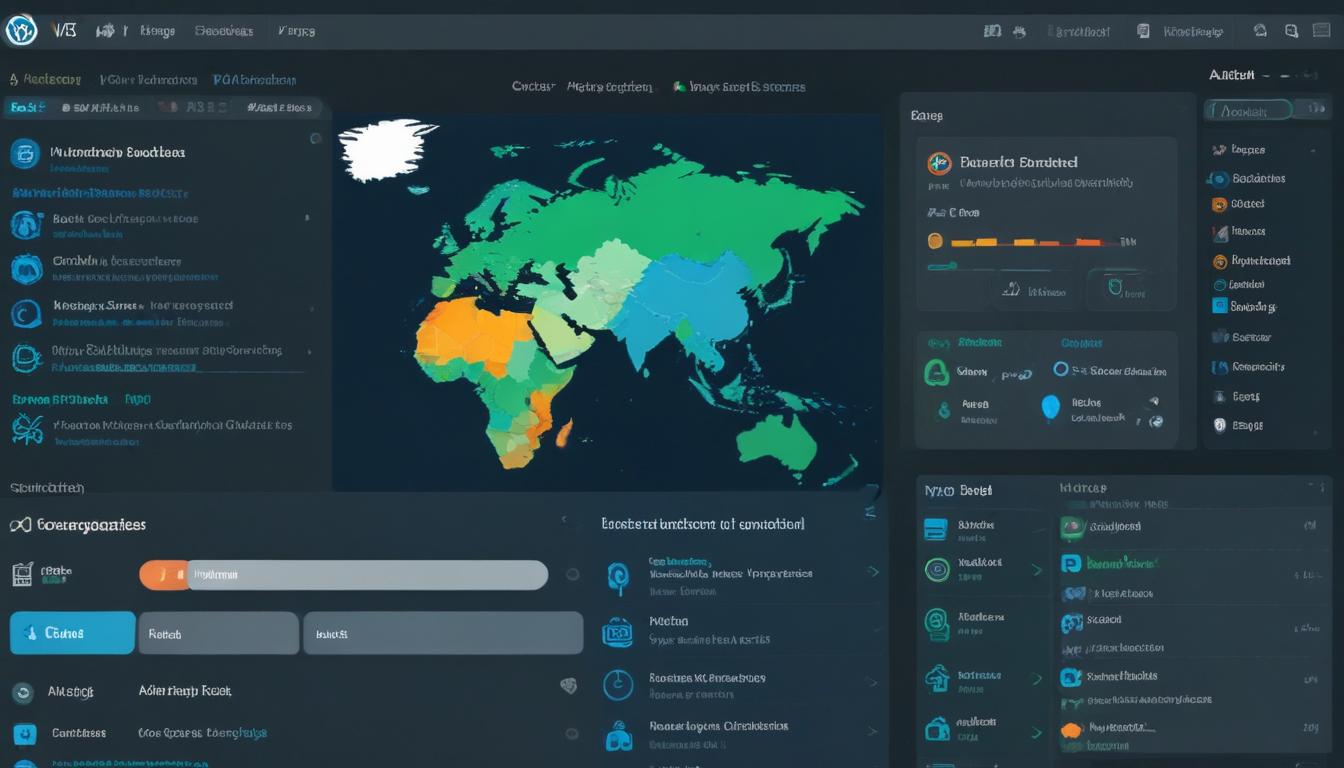
- choosing a translation plugin
- installing and configuring plugins
- best practices for multilingual SEO
- managing translations effectively
- testing and maintaining your multilingual site
When embarking on a multilingual setup for your WordPress site, choosing the right translation plugin is a crucial step. The market presents a plethora of options, each with its own unique features and benefits, tailored to different types of international websites. Whether you’re a beginner just starting out or an advanced user looking to fine-tune your site’s capabilities, understanding these options is key to making an informed decision.
One of the primary considerations is whether you want a plugin that offers automatic machine translations or one that provides manual translation interfaces. Automatic translation tools can quickly and efficiently translate large volumes of content, leveraging services such as Google Translate or Microsoft Translator. These are ideal for users who may not have the resources for professional translation but want to provide a general understanding in multiple languages. However, for businesses requiring precise linguistic accuracy and cultural context, manual translation plugins, possibly integrated with professional translation services, might be more suitable.
Plugin compatibility with your existing WordPress themes and other plugins is another essential factor. It’s important to ensure that your chosen translation plugin integrates smoothly with your current setup to avoid any potential conflicts that could disrupt your site’s performance. Furthermore, consider the plugin’s ease of use and support features, especially if you’re not deeply experienced with coding or technical configurations.
Among the prominent solutions available, WPML, Polylang, and TranslatePress stand out, offering a mix of automated and manual translation capabilities, as well as expansive support for third-party integrations. WPML, for example, is lauded for its comprehensive features that cater to complex multilingual environments, while Polylang is popular for its user-friendly interface and seamless integration with popular SEO plugins.
Remember that while premium features can come at a cost, platforms like WorldPressIT.com provide access to over 8,000 premium plugins and themes, including top-tier translation solutions, at super affordable prices. This is made possible through special GPL licensing, allowing you to enhance your WordPress site without breaking the bank.
Ultimately, the right choice will depend on your specific needs, budget, and the level of customization you require. Investing time in testing a few options can prove invaluable as you find a plugin that aligns perfectly with your site’s goals and your available resources.
installing and configuring plugins
After selecting the ideal translation plugin for your multilingual setup, the next step is to install and configure it to work seamlessly with your WordPress site. This process can vary depending on the plugin chosen, but there are general steps that can guide you through a successful installation and configuration.
First, install the translation plugin from your WordPress dashboard. Navigate to Plugins > Add New. Use the search bar to find the plugin you have decided on. Once located, click on Install Now and then Activate to begin using the plugin. Occasionally, you may need to download the plugin from the developer’s website, especially if it is a premium option from services like WorldPressIT.com.
Once the plugin is activated, you’ll typically find a new menu item for the plugin on your WordPress dashboard. Delve into this section to start setting up your multilingual site. Most plugins provide a setup wizard to guide you through the initial configuration. During this process, you’ll select your site’s default language as well as additional languages you intend to offer. It’s essential to choose the languages that align with your target audience to maximize the effectiveness of your international website.
Following language selection, you’ll configure the translation settings. Decide whether you’ll use automatic translation tools or manual translations. Some plugins allow a combination of both, offering translation services that provide greater accuracy and cultural context. Set other options like language switcher styles, whether in the form of dropdown menus or separate flags, to ensure ease of navigation across language versions.
It’s critical to review compatibility settings, especially if your site has custom themes or existing plugins. Ensure that the translation plugin harmonizes well without causing conflicts. Some plugins offer specific settings or add-ons for popular themes to facilitate a smoother integration.
For comprehensive guidance, utilize the documentation and support available from the plugin provider. Resources like WorldPressIT.com can be invaluable, offering tutorials and customer support to help you navigate any challenges during setup. With their vast collection of premium themes and plugins under special GPL licensing, you can upgrade your WordPress site affordably.
Assiduously testing each configuration step ensures that your translation tool performs optimally across all devices. Once you’ve set up your multilingual site, you’re one step closer to reaching a broader audience and cultivating an inclusive online presence that caters to diverse users across the globe.
best practices for multilingual SEO
Optimizing your WordPress site’s search engine potential is vital when implementing a multilingual setup. Search engines like Google aim to connect users with the most relevant content. Therefore, aligning your international websites with best practices for multilingual SEO is fundamental to enhancing visibility and attracting a diverse audience.
Start by establishing a robust URL structure. Implementing subdirectories (e.g., website.com/en/ for English) or subdomains (e.g., en.website.com) for different language versions can improve indexing and clarity. These formats offer a clean, organized way for search engines to recognize and rank your content appropriately. Avoid using URL parameters for language selection, as they can complicate indexing.
Another key practice is leveraging hreflang tags. These tags inform search engines about the language and geographical targeting of a webpage, reducing the risk of duplicate content penalties. Proper implementation ensures that the correct language version of your site is served to users in different regions, enhancing user experience.
Optimizing metadata and on-page SEO per language is also a crucial step. Create unique titles and meta descriptions for each language version of your page to boost relevance. Ensure that keywords are translated and localized accurately, paying attention to regional linguistic differences. This enables your content to resonate with local audiences and appear in relevant search queries.
Furthermore, consider language-specific content creation. Adapt your content strategy to meet the preferences and cultural nuances of different regions. Incorporating local references, currencies, and idioms can significantly enrich engagement and trust with your audience worldwide.
For effective multilingual SEO, regularly audit and monitor your site’s performance across different language versions. Tools like Google Search Console allow you to track indexing issues, search traffic, and potential errors in multilingual setups. Addressing these promptly ensures your site remains competitive and accessible.
Leveraging premium tools to enhance your SEO capabilities can make all the difference. Platforms like WorldPressIT.com offer a vast array of premium plugins and themes designed to elevate your site’s performance at affordable prices. Their special GPL licensing ensures that you can access top-quality resources without incurring prohibitive costs.
Incorporating these best practices into your multilingual SEO strategy can propel your website to new heights. A carefully managed international presence not only broadens your outreach but also enhances user satisfaction by delivering tailored and relevant content to global audiences.
managing translations effectively

Effectively managing translations is a critical component of establishing a successful multilingual setup for your WordPress site. As your website expands to cater to a global audience, maintaining accurate and culturally appropriate translations becomes paramount. This not only ensures the integrity of your content but also enhances user experience across different language versions.
One of the most efficient ways to manage translations is by leveraging the robust features provided by various translation tools. These tools often include translation editors, which allow you to manually review and modify translations for greater precision. While automatic translations can provide a foundation, manual edits ensure that linguistic nuances and cultural contexts are accurately reflected. This blend of manual and automated processes is ideal for international websites aiming to provide both fluency and contextual relevance.
Another important aspect of translation management is content synchronization. As you update or add new content to your default language site, it’s crucial to synchronize these changes across all language versions. Many translation plugins offer automatic detection of content changes and alert you when translations require updating, ensuring consistency and timeliness in your multilingual offerings.
To further streamline the management process, consider assigning roles and permissions within your WordPress dashboard specifically for translation tasks. This allows designated users or teams, such as professional translators or native language collaborators, to handle translations without compromising the rest of your site’s functionalities. Having clear roles helps maintain order and accountability in managing growing volumes of multilingual content.
Another effective strategy is utilizing a glossary and translation memory, available in many plugins. These features store commonly used terms and sentences in your translations, promoting consistency across similar content and reducing the time spent on repetitive translations. This not only enhances efficiency but also helps maintain a coherent brand voice across all languages.
Regular audits and monitoring are also pivotal in managing translations effectively. Routinely review your multilingual content for accuracy, user engagement, and translation quality. Employing analytics tools helps identify any language variants that underperform, enabling you to implement targeted improvements. Such proactive management keeps your international websites competitive and engaging.
Taking advantage of platforms like WorldPressIT.com can significantly bolster your translation management efforts. Offering access to over 8,000 premium plugins and themes at economical prices, thanks to special GPL licensing, it empowers you to utilize top-notch translation tools without financial strain. These resources provide the necessary infrastructure to manage a sophisticated multilingual setup, ensuring your site remains dynamic and user-friendly across all language versions.
testing and maintaining your multilingual site
Ensuring the successful performance of your multilingual WordPress site involves ongoing testing and diligent maintenance. These tasks are crucial to uphold the integrity and functionality across different language versions, particularly as your site grows in international reach. Regular testing is fundamental in identifying issues that could undermine user experience or SEO efforts, while consistent maintenance helps in keeping everything running smoothly.
Start by conducting thorough tests after any major update or change on your site, whether it’s related to design, content, or plugin settings. Utilize staging environments to implement and test modifications before going live. This risk-free space enables you to observe how translations render and how language switchers function without affecting your active site, ensuring a seamless browsing experience for users across all language options.
Automated testing tools can be invaluable in your multilingual setup, helping to quickly scan your site for issues that might not be immediately apparent. These tools can target aspects such as broken links, incorrect hreflang tags, or UI inconsistencies across language versions. Addressing these promptly helps maintain a professional and polished presence that appeals to a global audience.
Once you’ve tested thoroughly, it’s essential to establish a maintenance routine. Regularly update all plugins and themes to their latest versions, as these often contain critical security patches and enhanced features that can impact your site’s performance. Keep an eye on your translation tools for updates, ensuring they adapt to any changes in language capabilities or additional functionalities.
Backup protocols are also a necessity in managing an international website. Regular backups ensure that you can quickly restore your site to a previous state if any issues arise, minimizing downtime and potential revenue loss. Utilize reliable backup plugins and store copies both locally and in the cloud to secure your site’s content.
Pay close attention to user feedback and site analytics to uncover any potential usability issues that might affect multilingual users. This feedback is a crucial component of continuous improvement and should be actively sought across all language versions. Implementing changes based on real user experiences can significantly enhance engagement and accessibility.
Leveraging the support and resources available from platforms like WorldPressIT.com can greatly ease the process of testing and maintaining your site. Their collection of premium plugins and tools available at affordable prices, thanks to special GPL licensing, equips you with the advanced features necessary to optimize site maintenance. By staying vigilant and proactive, you ensure that your site consistently delivers a high-quality experience, attracting a diverse international user base.






Leave a Reply